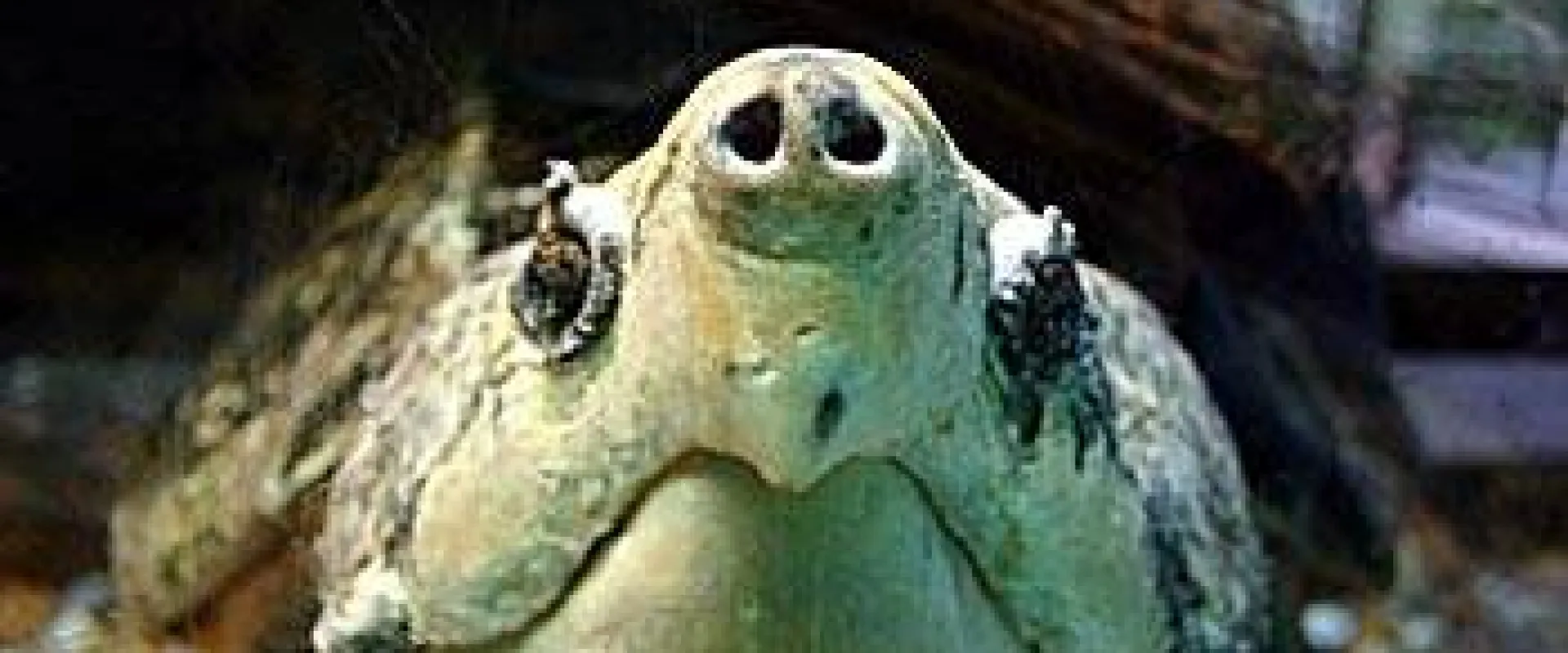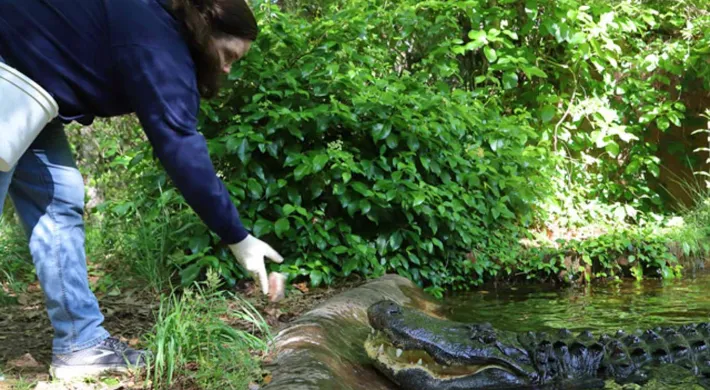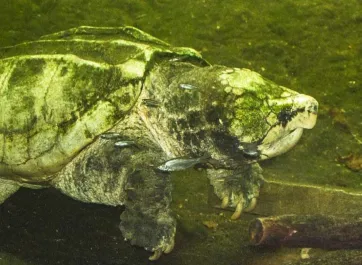Written by Dana Strickland, Zookeeper, North Carolina Zoo
Did you know that the North Carolina Zoo’s “Cypress Swamp” is home to two Alligator Snapping Turtles? Today I’m going to tell you a bit about these prehistoric reptiles and how we take care of them at the Zoo!
Alligator Snapping Turtles are native to the waterways of the southern US. They are usually found in slow-moving rivers and streams that flow into the Gulf of Mexico. They are not native to the state of North Carolina – so if you ever come across a snapping turtle in NC, it would be the Common Snapping Turtle, a cousin of the Alligator Snapper. The name Alligator Snapping Turtle comes from the ridges that run the length of the shell, which look similar to the ridged back of an alligator.
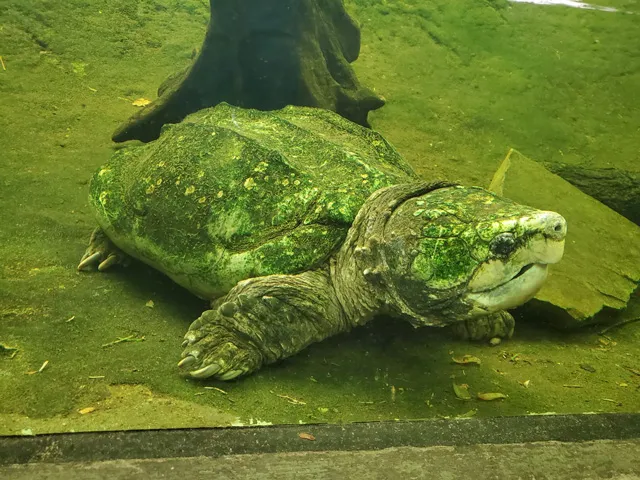
Alligator snapping turtle
These turtles are adapted to an aquatic lifestyle and only venture onto land to lay eggs. They can stay submerged underwater for about 40 to 50 minutes between breaths! Alligator Snappers are pretty sedentary, which allows algae to grow right on the backs of their shells. This algae growth helps them blend in perfectly to their underwater environment.
Alligator Snappers are carnivores, and although they will eat almost anything that they can catch or scavenge, the majority of their diet is made up of fish. These turtles have a unique strategy for catching fish. Inside of their mouths, a small pink appendage is called a lure that closely resembles a worm. Alligator Snappers will sit very still underwater, blending in perfectly to their surroundings, with their mouth gaping open. The lure on their tongue wiggles around, tempting fish to come close and check out what appears to be a tasty snack. Once within reach, the patiently waiting turtle can then snap its strong jaws shut on the fish. Pretty sneaky!
Here at the Cypress Swamp, we have two Alligator Snapping Turtles. Maximus, affectionately called Max, is our resident centenarian. He is estimated to be between 100 and 120 years old! Max came to the North Carolina Zoo in 2015. He is the larger of our two turtles, weighing in at 135 pounds.
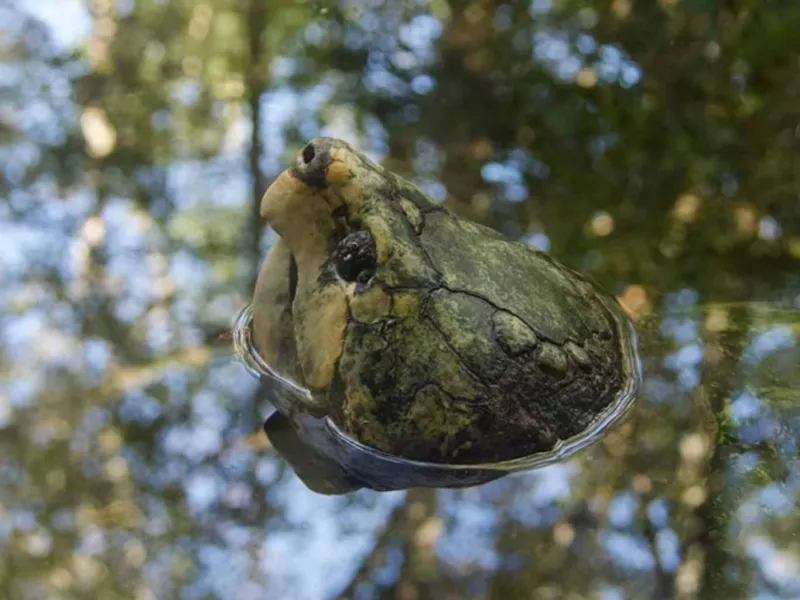
Alligator snapping turtle poking head out of water
Our second Alligator Snapping Turtle is a female named Igor. Think Igor is a strange name for a girl? When she arrived at the Zoo in 2012, she was believed to be a male. We discovered that she is indeed a female this past summer when she began laying eggs! Igor is much smaller than Max, weighing in at just 46 pounds. Previously, a person had removed her from the wild and kept her as a pet in poor conditions. She was eventually rescued and taken to a wildlife rehabilitation center before coming to the North Carolina Zoo. We don’t know her exact age - but based on her size, we estimate that she is around 40 years old.
At the Zoo, the Snapping turtles’ diet consists primarily of fish. During the warmer months (usually from around May through October), keepers feed the turtles either herring or trout three days per week. Occasionally they may get a piece of raw chicken as a special treat. During the cold weather months, the turtles cease eating. That’s right; they go through the whole winter without eating! Turtles are ectotherms, meaning that their body temperature depends upon the temperature of the surrounding environment. When it is cold, their bodies are not warm enough to digest food. Also, their metabolic needs are very low when during the cold, so they don’t need to consume anything for energy.
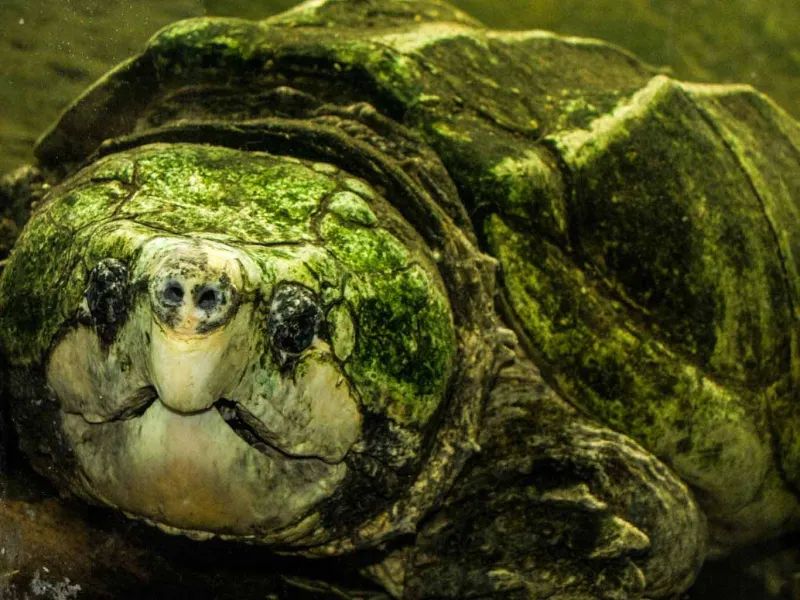
Alligator snapping turtle close up
Alligator Snappers tend to prefer areas with overhanging branches above the water to create more cover in the wild. We replicate this in the Zoo by cutting down leafy branches and placing them in or above the water. The turtles love to hide out under the shelter of these branches. We also provide them with underwater logs that the turtles enjoy hiding under or pushing around the pool.
Did you know that Alligator Snapping turtles can be trained? Keepers use food rewards (fish) as positive reinforcement during training. The primary behavior that keepers have been working on is a “target” behavior. We give the turtles a cue by tapping the surface of the water with the feeding tongs. The turtles have learned that if they come toward this sound, they are rewarded with food. Training the turtles helps keepers develop a positive relationship with them.
Stop by and say hello to Max and Igor next time you visit the Zoo!

Check out the Zoo Filez on Alligator Snapping Turtles below!
